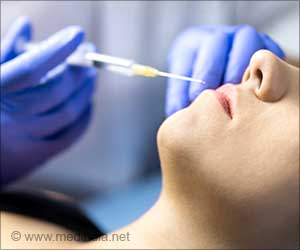Orange peel extract shows potential in reducing TMAO production and promoting cardiovascular health through its rich phytochemicals.
- Orange peel extract inhibits TMAO production linked to cardiovascular disease
- Extraction processes isolate beneficial polar and non-polar compounds
- Potential to transform agricultural waste into heart-healthy supplements
UF study shows orange peel extract may improve heart health
Go to source).
The Link Between Gut Bacteria and Cardiovascular Health
In recent years, scientific research has increasingly pointed to the intricate relationship between gut bacteria, known as the gut microbiota, and cardiovascular health. While the gut microbiota play a crucial role in digestion and nutrient absorption, emerging evidence suggests that they also exert profound effects on systemic health, including cardiovascular function.1. Production of Trimethylamine N-Oxide (TMAO):
One of the key mechanisms through which gut bacteria influence cardiovascular health is the production of a compound called trimethylamine N-oxide (TMAO). During the digestion of certain nutrients, such as choline and carnitine found in foods like red meat, eggs, and dairy products, gut bacteria metabolize these compounds to produce trimethylamine (TMA). Subsequently, TMA is converted into TMAO by enzymes in the liver.
Elevated levels of TMAO have been associated with an increased risk of atherosclerosis, a condition characterized by the buildup of plaque in the arteries. Atherosclerosis is a leading cause of cardiovascular diseases such as heart attacks and strokes. Research suggests that TMAO promotes the formation of atherosclerotic plaque and contributes to inflammation and oxidative stress within the arterial walls.
3. Impact on Blood Clotting:
In addition to its role in atherosclerosis, TMAO has been implicated in the regulation of blood clotting. High levels of TMAO have been shown to promote platelet aggregation, leading to an increased risk of blood clots, which can obstruct blood flow to vital organs and precipitate cardiovascular events.
4. Association with Hypertension and Heart Failure:
Recent studies have also linked elevated TMAO levels to hypertension (high blood pressure) and heart failure. TMAO has been found to impair the function of blood vessels, leading to endothelial dysfunction and increased vascular resistance, both of which contribute to hypertension. Moreover, TMAO may directly impact cardiac function, exacerbating the progression of heart failure.
5. Potential Therapeutic Target:
Given the emerging evidence implicating TMAO in the pathogenesis of cardiovascular diseases, researchers are exploring therapeutic strategies aimed at modulating gut bacteria and reducing TMAO production. These approaches include dietary interventions, probiotics, and the development of novel pharmacological agents targeting specific microbial pathways involved in TMAO metabolism.
Orange Peel Extract: A Novel Solution
In the pursuit of innovative strategies to combat cardiovascular disease, researchers have turned their attention to the potential of orange peel extract. Spearheaded by a team at the University of Florida, a groundbreaking exploration into the cardiovascular benefits of orange peel extract has yielded promising results.Ability of orange peel extracts to mitigate the production of trimethylamine N-oxide (TMAO) and trimethylamine (TMA). These compounds, produced by certain gut bacteria during digestion, have been linked to an increased risk of cardiovascular disease. Leveraging the richness of beneficial phytochemicals found in orange peels, the researchers sought to harness their potential in combating these harmful substances.
The Extraction Process
Central to the research conducted was the extraction process, which aimed to isolate the bioactive compounds present in orange peels. Dr. Wang elucidated this process, drawing an analogy to the separation of components in a salad dressing. Similar to how the water or vinegar part of a dressing can be separated from the oil component, the researchers utilized polar and non-polar solvents to extract two distinct fractions from the orange peel.- Polar Fractions: The polar fractions, akin to the water or vinegar part of the dressing, were obtained using solvents that possess polarity. These solvents facilitated the extraction of water-soluble compounds from the orange peel, including a diverse array of phytochemicals with potential cardiovascular benefits.
- Non-Polar Fractions: Conversely, the non-polar fractions, reminiscent of the oil component in a dressing, were extracted using solvents with lower polarity. This extraction process targeted lipophilic compounds present in the orange peel, which may possess unique bioactive properties relevant to cardiovascular health.
The study yielded promising results, particularly regarding the efficacy of the orange peel non-polar fraction extract in inhibiting the production of harmful chemicals. Moreover, researchers identified a compound known as feruloyl putrescine in the orange peel polar fraction extract, which demonstrated significant inhibition of the enzyme responsible for TMA production.
Harnessing Waste for Health Benefits
The significance of these findings extends beyond scientific breakthroughs. Annually, millions of tons of orange peels are generated as byproducts of orange juice production, with a considerable portion relegated to cattle feed or waste. However, given the FDA’s recognition of natural orange peel extracts as safe for human consumption, Dr. Wang envisions a transformative repurposing of these discarded peels.Dr. Wang emphasizes the potential of orange peels to be repurposed into valuable, health-promoting ingredients such as dietary supplements or food additives. By enriching functional foods with bioactive compounds extracted from orange peels, novel therapeutic strategies for heart health could emerge, offering a beacon of hope for individuals striving to safeguard their cardiovascular well-being.
In summary, the research on orange peel extract represents a significant stride in the quest for innovative approaches to combat cardiovascular disease. By uncovering the health potential hidden within orange peels, Dr. Wang and her team have not only illuminated a promising avenue for heart health but also underscored the transformative power of repurposing agricultural waste for human benefit. As the scientific community continues to explore the therapeutic properties of natural compounds, orange peel extract stands out as a beacon of hope in the fight against cardiovascular ailments.
Reference:
- UF study shows orange peel extract may improve heart health - (https://news.ufl.edu/2024/05/orange-peel-study/)
Source-Medindia
















